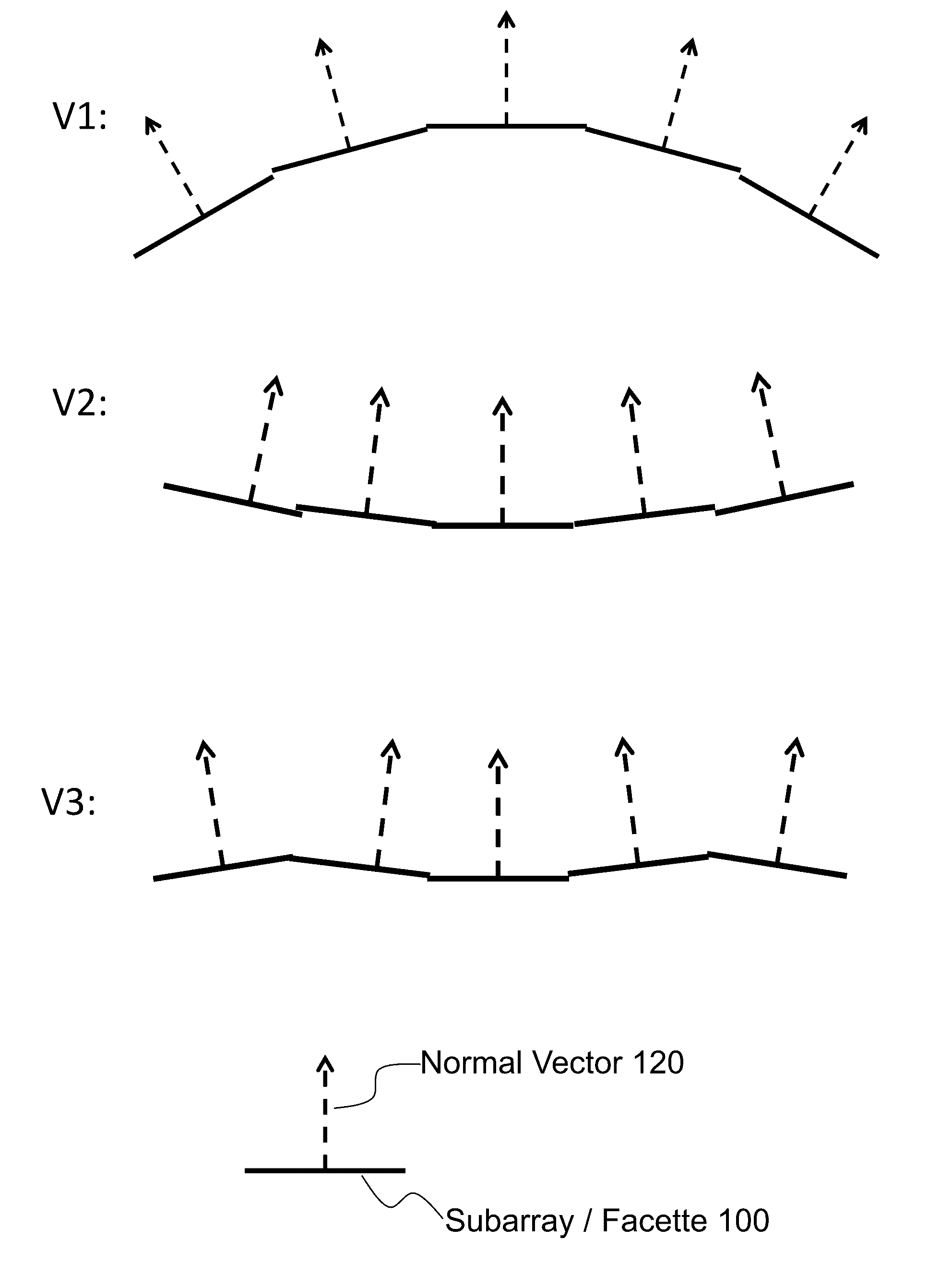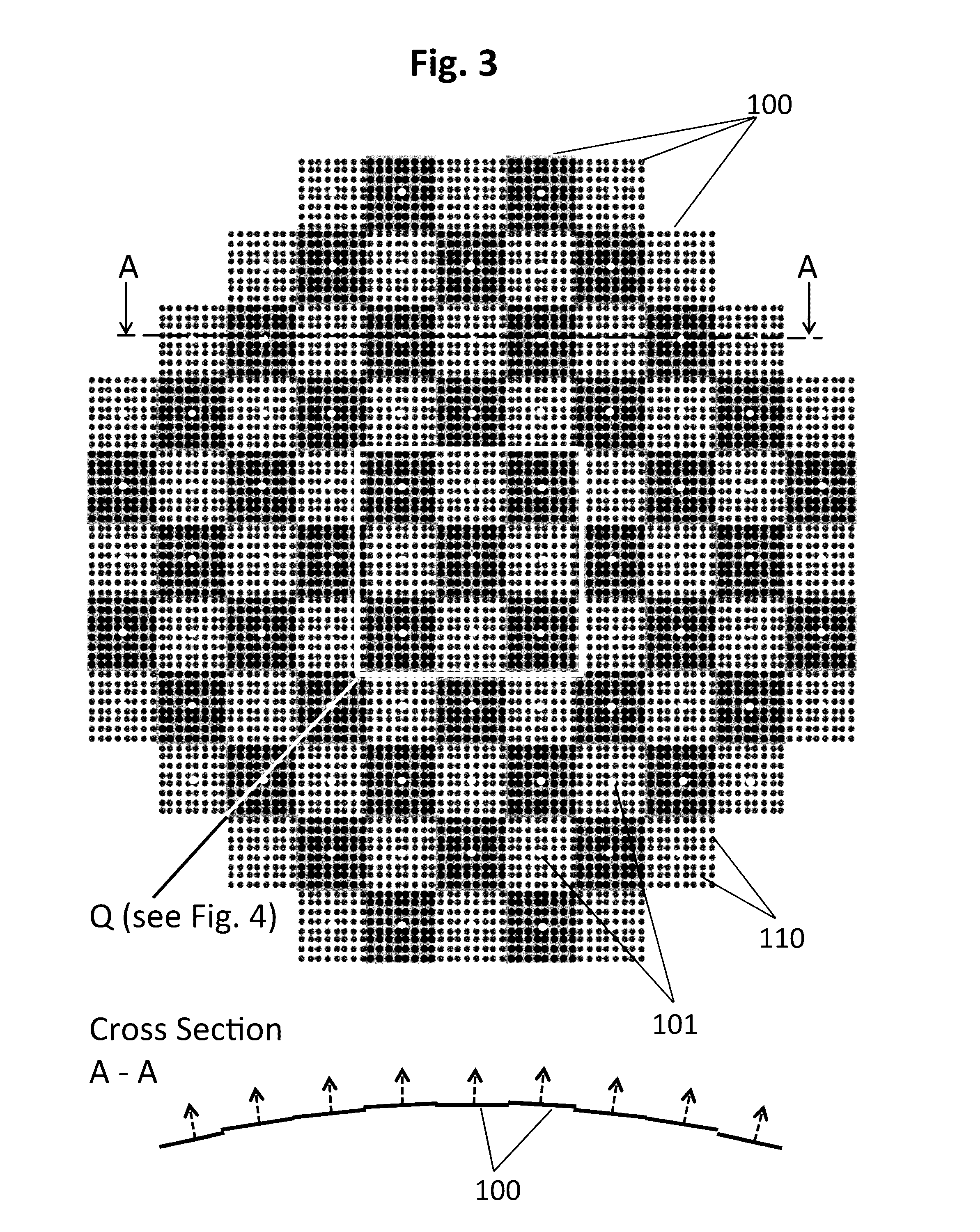Dual-band phased array antenna with built-in grating lobe mitigation
- Summary
- Abstract
- Description
- Claims
- Application Information
AI Technical Summary
Benefits of technology
Problems solved by technology
Method used
Image
Examples
Embodiment Construction
[0036]It is well known in phased array theory that the antenna pattern for sufficiently large arrays can be assumed to be the product of the element pattern and the array factor as in equation Eq 1, shown for a linear array, but not limited to linear arrays:
E(θ)=ERE(θ)ElementPattern∑nAn2πdλ(sinθ-sinθ0)nArrayFactorEq1
[0037]The first term ERE(θ) in Eq 1 is called element pattern, whereas the sum is commonly known as array factor. In this second term the individual signals with amplitude An and Phase
2πdλ(sinθ-sinθ0)n
are summed. d designates the distance between neighboring radiating elements. The phase depends on the position n*d within the array, the wavelength λ, the desired direction θ and the steering direction θ0. The array factor will have maximal amplitude when the “phase” in the exponential term becomes a multiple of 2π as noted in Eq 2:
2πdλ(sinθ-sinθ0)=k2πk∈ℤEq2
[0038]If
dλ
is smaller than 0.5, Eq 2 is solvable only for k=0 and only one major lobe exists in the whole scanning ran...
PUM
 Login to View More
Login to View More Abstract
Description
Claims
Application Information
 Login to View More
Login to View More - R&D
- Intellectual Property
- Life Sciences
- Materials
- Tech Scout
- Unparalleled Data Quality
- Higher Quality Content
- 60% Fewer Hallucinations
Browse by: Latest US Patents, China's latest patents, Technical Efficacy Thesaurus, Application Domain, Technology Topic, Popular Technical Reports.
© 2025 PatSnap. All rights reserved.Legal|Privacy policy|Modern Slavery Act Transparency Statement|Sitemap|About US| Contact US: help@patsnap.com



